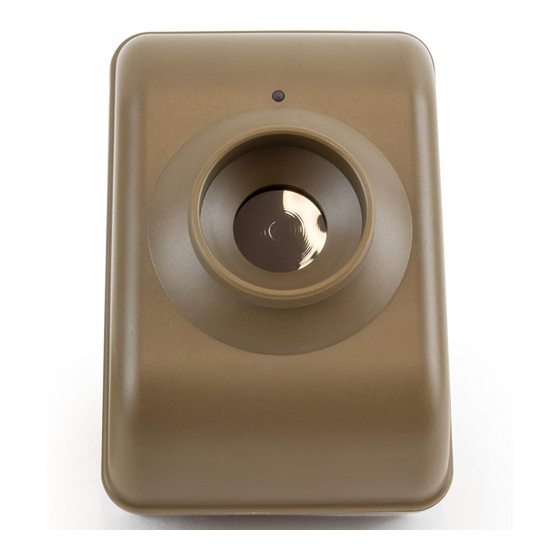
Table of Contents
Advertisement
Quick Links
DCMT-2500
Wireless Transmitter
Owners Manual
WARNING:
This device complies with Part 15 of the FCC
rules, operation of this device is subject to the
following conditions: 1. This device may not
cause harmful interference. 2. This device must
accept any interference, including interference
that may cause undesired operation.
NEW ZEALAND
AUSTRALIA
www.bealert.co.nz
www.bealert.com.au
Advertisement
Table of Contents

Summary of Contents for Dakota Alert DCMT-2500
-
Page 1: Owners Manual
DCMT-2500 Wireless Transmitter Owners Manual WARNING: This device complies with Part 15 of the FCC rules, operation of this device is subject to the following conditions: 1. This device may not cause harmful interference. 2. This device must accept any interference, including interference that may cause undesired operation. -
Page 2: Mounting The Transmitter
INSTALLATION: FIGURE 1 The DCMT-2500 transmitter is used with the Dakota Alert DCR-2500 receiver. The DCMT-2500 transmitter uses a passive infrared (PIR) detector to detect people, vehicles or large animals at the monitored location. When the transmitter detects an object, it will send a signal to the receiver, which will sound one of four different tones (Classical, Westminster Chime, Ding Dong, or Whistle) for a few seconds. - Page 3 Note: The transmitters and receivers are preset at the factory. DO NOT change settings, unless changing the tune or experiencing false signals. 1. Locate the dip switches in the DCMT-2500 circuit board (Figure 5). 2. The first eight dip switches are for the frequency setting (256 combinations).
-
Page 4: Technical Support
We will be happy to answer your questions and help you in any way we can. WARRANTY: Dakota Alert warrants this product to be free of defects in material and workmanship for a period of one year from the date of purchase. This warranty does not cover damage resulting from accident, abuse, act of God or improper operation.













Need help?
Do you have a question about the DCMT-2500 and is the answer not in the manual?
Questions and answers